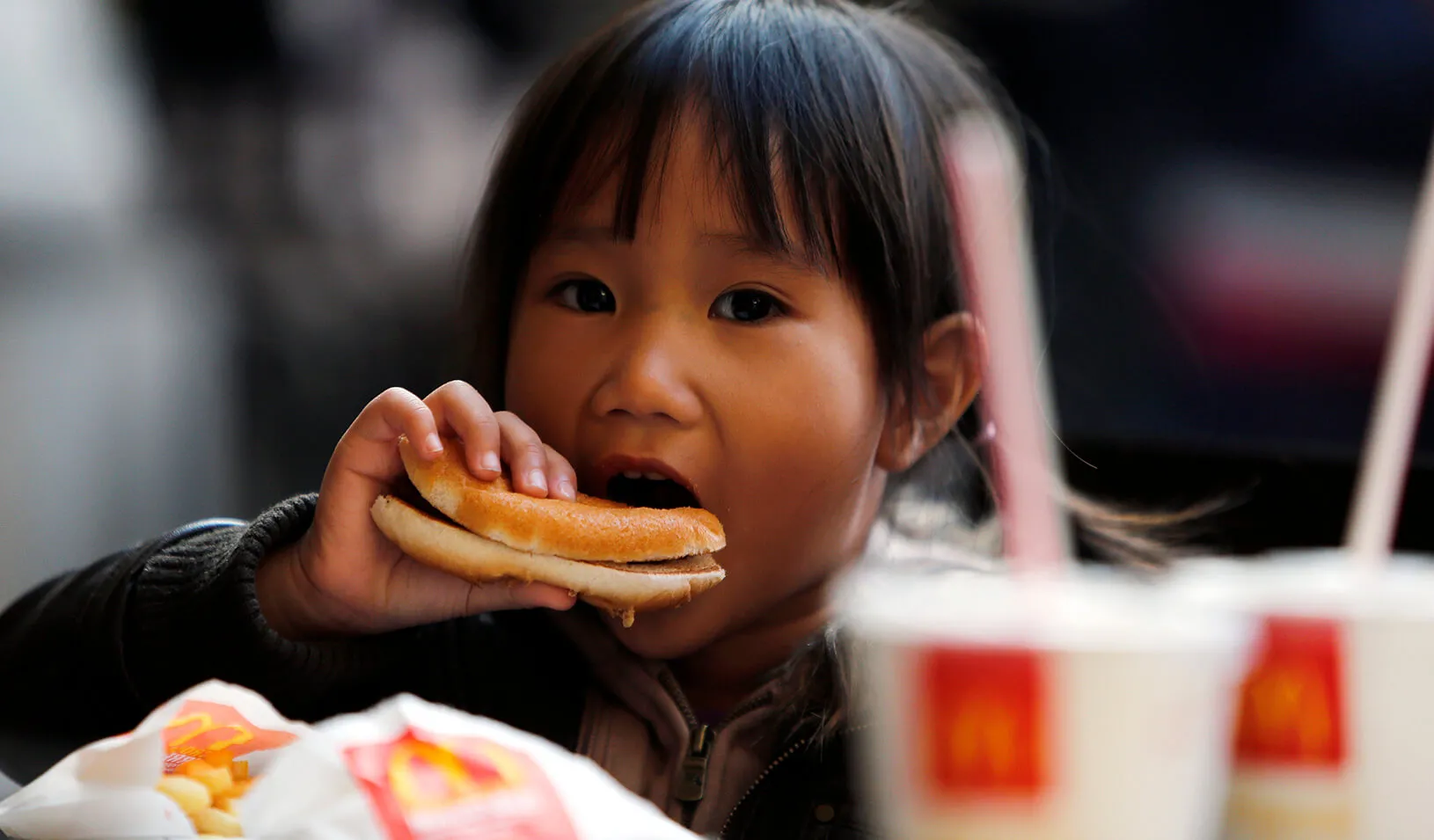The Roots of Nutritional Inequality
Why do wealthy people eat healthier?
January 26, 2018

What drives people to eat poorly? Often, their decisions are based on a lack of nutrition education. | Reuters/Stefano Rellandini
No matter the concern — educational opportunities or incarceration rates or life expectancy — inequality tends to have its finger on the scale. This is certainly the case when it comes to healthcare outcomes: Obesity, for instance, is far more prevalent among those with lower incomes, as is unhealthy eating.
But why this nutritional disparity exists is a sticky problem, with one camp of scholars and policymakers attributing the cause to an absence of grocery stores in poor neighborhoods — so-called food deserts. This is an intuitively attractive idea. Without easy access to healthy foods, people are more likely to purchase unhealthy foods. It also provides a straightforward solution: Build more grocery stores. And so the Affordable Care Act has paid out $100 million to help “eliminate food deserts.” Pennsylvania alone has provided $85 million to subsidize the supply of healthy food in underserved areas.
But what if proximity to grocery stores isn’t the real problem? Or, more pointedly, what if there’s a more efficient way to close this nutritional gap, if $100 million spent on food deserts is, in the end, money misspent?
The False Lead of Food Deserts
Rebecca Diamond, an assistant professor of economics at Stanford Graduate School of Business whose work focuses on the causes and effects of inequality, recently took up the question of how inequality and nutrition interact. Partnering with two colleagues, New York University’s Hunt Allcott and the University of Chicago’s Jean-Pierre Dubé, she explored a broad range of issues that might affect how and whether low-income consumers purchase nutritional foods. “Once we started doing this analysis, it became pretty clear that supply wasn’t that big a deal,” she says.
People, it turns out, are willing to drive to get groceries, with residents of food deserts purchasing almost 90% of their groceries from supermarkets outside of their neighborhoods. When a new store opens locally, it may draw business away from more distant competitors, but it does little to influence eating habits. Diamond and her colleagues found that, at most, the absence of local supply accounts for 9% of the nutrition gap between rich and poor. “And statistically we couldn’t even reject the possibility that it’s zero percent,” she said.
In this sense, the authors write in the paper, the entire notion of a “food desert” is somewhat misleading. “Any benefits of ‘combating food deserts’ derive less from healthy eating and more from reducing travel costs,” they say. The real issue dividing nutritional intake between rich and poor households is instead linked to demand.
The Unexpected Role of Education
The important question, the researchers decided, is what does it mean to have different preferences across the income distribution? “Why would households have these different demands?” Diamond says.
Diamond and her colleagues investigated, and discarded, a range of potential explanations. Poorer families don’t, for instance, seem to maximize calories per dollar, which would incline them toward unhealthier purchases; nor is the relative expense of healthier foods a decisive factor in whether people choose to purchase healthy foods. (In fact, excluding fresh produce, healthy foods are about 8% less expensive than unhealthy foods.) Convenience of preparation has no explanatory power, and neither do geographical norms: When families that have unhealthy eating habits move to neighborhoods where healthier eating is predominant, their habits don’t change.
What ultimately explains almost 30% of demand for healthy groceries is education — both consumers’ educational attainment as well as their nutritional knowledge. “Knowledge and information may mitigate a significant amount of this disparity,” says Diamond. “And this suggests that policies to improve knowledge could help to close this gap.”
This is a timely insight, as poor nutrition remains a staggering public health burden, contributing to hundreds of billions of dollars in medical costs every year. Nutritional inequality has also been growing over the past several years. New methods of intervention — better education rather than more grocery stores — could make people healthier while lowering healthcare costs, a large share of which are borne publicly, through Medicaid.
Implications Beyond Nutrition
But the takeaway, notes Diamond, extends beyond nutrition. The original literature on food deserts and their potential connection with nutritional deficiencies was often based on small samples — one or two neighborhoods — and incomplete data. She and her colleagues, meanwhile, drew on vast, modern datasets to get a clearer picture of what was going on.
“One reason we were able to make so much headway on this question was because the unparalleled quality of the data allowed us to look at this in unprecedented detail,” Diamond says. And while she noted many fields are getting better about using evidence-based approaches, it’s imperative to keep this momentum. Policymakers should collect robust data and, importantly, look beyond simple correlations to design the most economical and effective interventions.
“Correlations are suggestive,” she says, “but not conclusive. And we absolutely need high-quality data to devise the best solutions.”
For media inquiries, visit the Newsroom.
Explore More

When Is It Too Late to Give Up Control of Your Finances?

Recessions Are Painful, but Stagnant Growth Could Prove More Challenging



